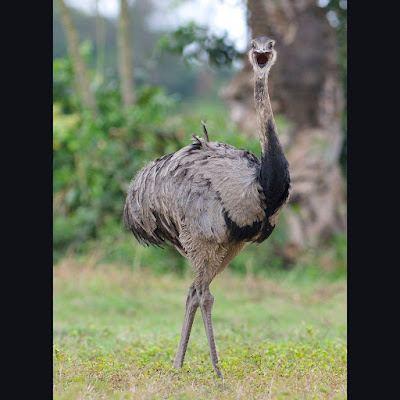Abstract
Recent phylogenetic studies question the monophyly of ratites (large, flightless birds incorporating ostriches, rheas, kiwis, emus and cassowaries), suggesting their paraphyly with respect to flying tinamous (Tinamidae). Flightlessness and large body size have thus likely evolved repeatedly among ratites, and separately in ostriches (Struthio) and emus (Dromaius). Here, we test this hypothesis with data from wing developmental trajectories in ostriches, emus, tinamous and chickens. We find the rate of ostrich embryonic wing growth falls within the range of variation exhibited by flying taxa (tinamous and chickens), but that of emus is extremely slow. These results indicate flightlessness was acquired by different developmental mechanisms in the ancestors of ostriches (peramorphosis) and the emu–cassowary clade (paedomorphosis), and corroborate the hypothesis that flight loss has evolved repeatedly among ratites.
KEYWORDS: ratites, flightlessness, evo devo, embryology, Palaeognathae, heterochrony
Cynthia Faux and Daniel J. Field. 2017. Distinct Developmental Pathways Underlie Independent Losses of Flight in Ratites. Biology Letters. DOI: 10.1098/rsbl.2017.0234
The face you make after seeing #BiologyLetters new cover... (photo from @daniel_j_field) via @RSocPublishing


